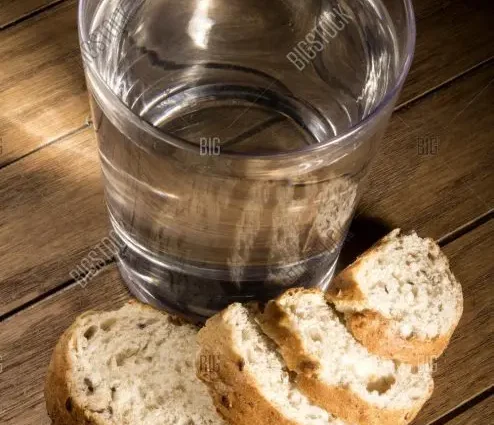Wheat or corn, unleavened or yeast, flat or fluffy… Thousands of varieties of bread that exist in the world have one thing in common – their exceptional role in the fate of mankind.
There is hardly any other product in the world, the mere mention of which would trigger such a complex chain of associations, as happens in the case of bread. Not just food, but its sacred symbol – this is how bread appears in the culture and traditions of various peoples.
Since ancient times, it has played a special role in the fate of mankind, remaining, in fact, the first and most important component of any meal in the vast expanses of Europe, the Middle East, North Africa, India and Central Asia. The significance of this product is enshrined in many proverbs and idioms that are present in almost all languages - while in many of them the word “bread” can be replaced by the word “life” without loss of meaning.
Christian tradition considers bread as the embodiment of the body of the Lord – even if not consecrated according to the church rite, it is still sacred.
Indian Vedic tradition promises terrible punishments for a person who risks wastefully eating food without bread, and Balkan traditions regulate the handling of it: it is impossible to turn over the loaf, which here personifies the sun, and it is recommended to cut it only by weight, moving the knife towards you.
As for Russian culinary customs, contrary to all the advice of nutritionists, they still prescribe any, especially the first, dish to be accompanied by bread.
However, despite the complete unanimity in regard to the exceptional value of bread, in different regions this word sometimes refers to products that are completely different from each other. Historically, the first type of baking that a person had a chance to get acquainted with was yeast-free cakes – in fact, a version of thick cereal stew dried over an open fire. And today this “primitive” bread is easy to make at home: by mixing flour, water, salt, a pinch of soda and a couple of tablespoons of vegetable oil in a bowl, we get a thick, viscous dough, which, after frying in a dry frying pan, will turn into a fragrant cake – an exact analogue of the unleavened bread of our distant ancestors.
Onion buns by William Pokhlebkin
- 1 medium onion
- 1 sachet of dry yeast
- 1 / 3 glass of vegetable oil
- 0,5 cup warm water
- 1 glass of warm milk
- 2 tsp. salt
- 1 Art. l. Sahara
- flour.
In a bowl, mix sugar, dry yeast, 4 tbsp. l. flour and water, leave in a warm place for 15 minutes. Peel and finely chop the onion.
When the dough increases in volume and foam appears on its surface, add milk, butter, salt and chopped onion to it, then, gradually adding flour, start kneading the dough. It should be soft and elastic, easy to fall behind the hands.
Divide the finished dough into 10 pieces, form rounded, slightly flattened buns and put on a baking sheet covered with parchment.
Using a sharp knife, make a cross-shaped incision on each bun and leave to rise for 5-10 minutes.
Bake in the oven at 180°C for 25 minutes. Take out the baking sheet and cover the buns with a towel.
Recipe suggested by William. Pokhlebkin in his book Secrets of Good Cuisine, can serve as a basis for further experiments: replace onions with cheese, dried herbs or spices, and you will get a completely different, but no less tasty and original product.
ABOUT IT
William Pokhlebkin. “Secrets of good cuisine” Tsentrpoligraf, 2006.
Starting from the III millennium BC. e. the so-called sour, yeast bread appears – the ancient Egyptians and the Sumerians became the pioneers here, using the hop residue left during the production of beer as a leaven. Since then, the presence or absence of yeast in the dough has remained one of the most significant characteristics of bread.
Another important factor is the raw material from which it is made. All over the world today, soft wheat is the most common in this capacity – it contains a maximum of gluten, which gives the dough uniformity and softness. However, wheat bread could not completely displace competitors. So, in Russia, rye bread was and remains the most beloved.
In Central and South America, corn is taken as the basis for baking, which gives baked goods a sweetish aftertaste and a crumbly structure. And Indian papads are made from pea or bean flour.
However, despite all the differences in form and ingredients, there is something in common in bread, or rather, in our ideas about it: almost every modern person believes that the production of bread is a laborious task that requires special skills and devices. It is this prejudice that explains the fact that most of the bread we eat today is factory-made.
Meanwhile, in the old days, the preparation of bread was rightly considered the culinary alphabet – the fundamental principle from which the training in cooking begins. Baking bread requires much less effort than making the simplest soup or stir-fry. If we talk about the result, then it is able to exceed the wildest expectations: the aroma of home-baked bread will fill the house with a feeling of unique warmth and comfort. Moreover, having mastered the elementary principles of bread baking, you will find that endless horizons of culinary experiments open up before you, which can turn the cooking routine into an exciting and creative process.










